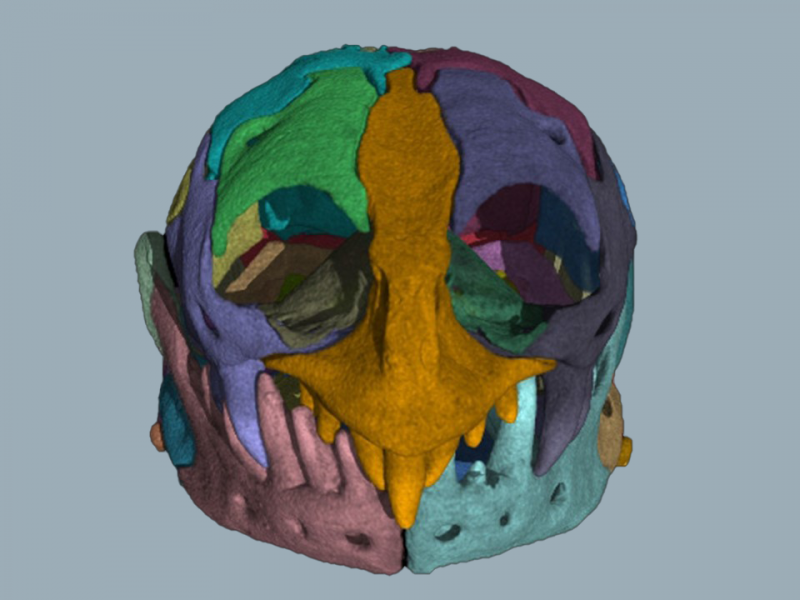Best Look Yet at Bizarre ‘Worm-Lizard’ Anatomy
December 8, 2024

Sporting smooth scales, a large central tooth and sometimes small forearms, amphisbaenians live underground, burrowing tunnels and preying on just about anything they encounter — not unlike a miniature version of the monstrous sandworms from “Dune.”
The fact that these “worm lizards” spend their days hunting beneath sand and soil makes them difficult to study. But thanks to two papers published in The Anatomical Record, new light is being shed on amphisbaenians and their strange anatomy.
With help from the University of Texas High-Resolution X-ray Computed Tomography Facility at the Jackson School of Geosciences, researchers completed a detailed comparative analysis of 15 amphisbaenians from southern Africa and a bone-by-bone description of every cranial anatomical feature of the species Zygaspis quadrifrons. The research is the most detailed look at southern African amphisbaenians to date, according to the research team, which included Christopher Bell, a professor in the Department of Earth and Planetary Sciences.
Some of the most striking imagery to come from CT scans of the reptiles are the large nasal cavities and wavy skull sutures that “grab” on to each other like puzzle pieces. The images also render in exquisite detail the amphisbaenians’ strange singular central tooth, which interlocks with two bottom teeth.
“Combined with the powerful jaw muscles in amphisbaenians, it gives them a ferocious bite for an animal of their size,” Bell said. “They can bite and tear out pieces of their prey.”
With little biological and ecological data available on amphisbaenians, studying their anatomy is the best way for researchers to learn more about these bizarre animals and the hidden lives they lead beneath the surface.
Back to the Newsletter